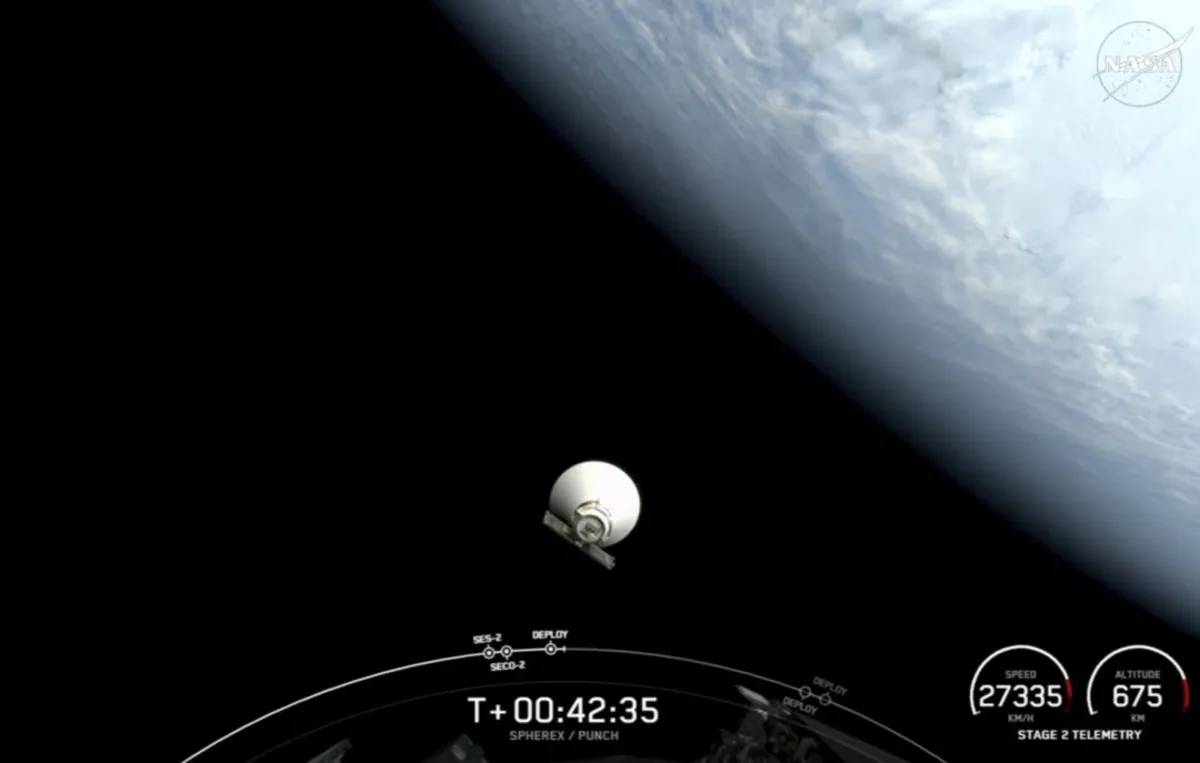
SPHEREx, short for Spectro-Photometer for the History of the Universe, Epoch of Reionization, and Ices Explorer, has officially launched into orbit, marking a significant milestone in astronomical research. This groundbreaking space telescope, deployed by SpaceX from California, is designed to conduct a comprehensive survey of the entire sky, offering an unprecedented view of hundreds of millions of galaxies and their collective cosmic glow since the dawn of time.
The ambitious $488 million SPHEREx mission aims to unravel the mysteries surrounding how galaxies formed and evolved over billions of years. In addition to this, it seeks to understand the rapid expansion of the universe during its initial moments after the Big Bang. SPHEREx's unique observational capabilities will allow scientists to gather valuable data on galaxy formation and the evolution of cosmic structures.
Closer to home, within our own Milky Way galaxy, SPHEREx will actively search for water and other essential ingredients for life. These ingredients reside in the icy clouds between stars, where new solar systems are born. By detecting these vital resources, SPHEREx could provide crucial insights into the conditions necessary for life to emerge.
The cone-shaped SPHEREx telescope will take approximately six months to map the entire sky using its advanced infrared technology and wide field of view. Over a span of two years, it plans to conduct four full-sky surveys as it orbits the Earth at an altitude of 400 miles. During this period, SPHEREx is expected to map around 450 million galaxies, offering a sweeping overview of the cosmos.
Unlike NASA's more intricate Hubble and James Webb Space Telescopes, which focus on individual galaxies and feature narrow fields of view, SPHEREx will concentrate on the total glow produced by galaxies, including the earliest formations that emerged following the Big Bang. This approach allows scientists to capture all light emitted throughout cosmic history, revealing information that may have been overlooked in previous observations.
Chief scientist Jamie Bock from the California Institute of Technology emphasizes that while SPHEREx won't directly observe the Big Bang itself, it will provide insights into its aftermath, thereby enhancing our understanding of the universe's beginnings. The telescope's infrared detectors are capable of distinguishing 102 colors that are invisible to the human eye, resulting in the most vibrant and comprehensive map of the cosmos ever created.
Bock also notes that the search for water in our galaxy could unveil areas rich in the key ingredients for life, offering clues about how life evolved on Earth. This mission represents a new capability in astronomical research, and with any new technology comes the potential for unexpected discoveries and surprises.
As SPHEREx embarks on its mission to illuminate the mysteries of the universe, it stands to revolutionize our understanding of galaxy formation, cosmic evolution, and the fundamental ingredients for life. Stay tuned for more updates as this remarkable journey unfolds.